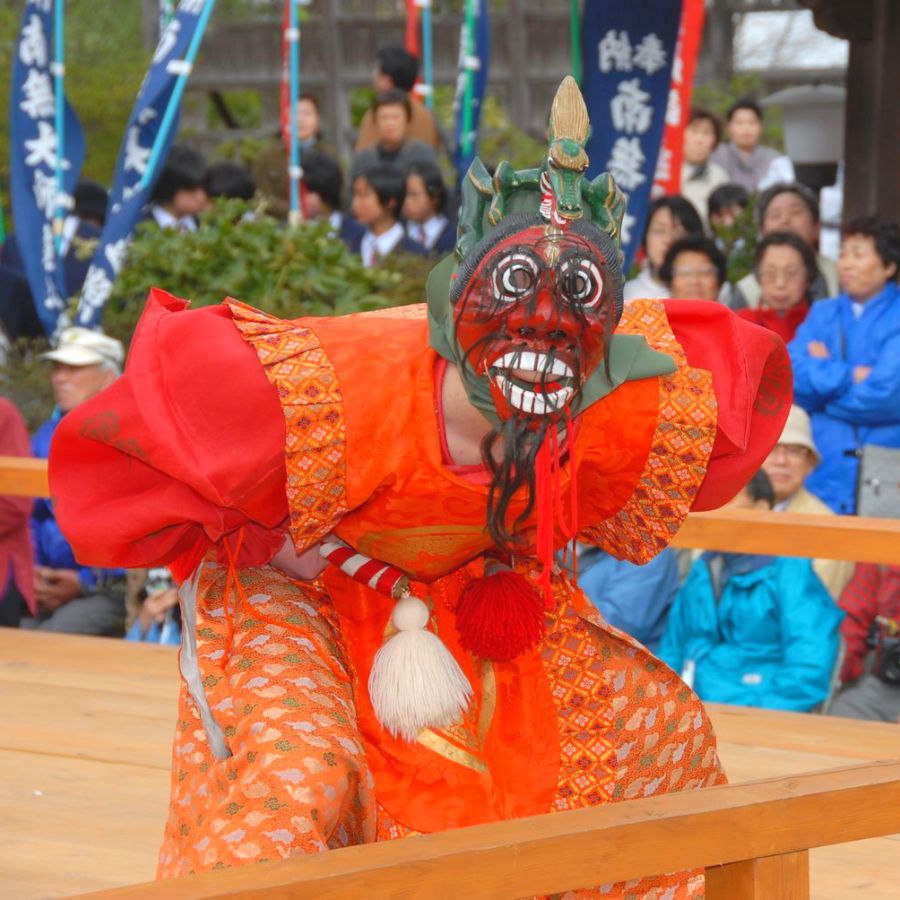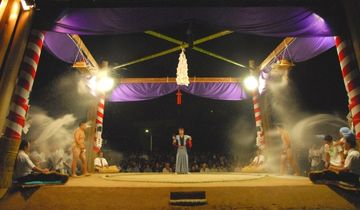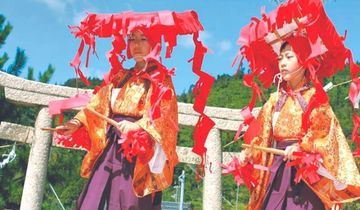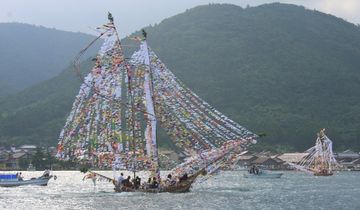
Lifestyles and Traditions - Culture
Rengee-mai Dances at Kokubun-ji Temple are performed every year on April 21, the anniversary of Kōbō Daishi's passing on the Gregorian calendar, as a dedication of bugaku (court dance and music). It is said that 120 dances were dedicated in the past, but nowadays, seven dances are performed: Dance of the Sleeping Buddha; Shishimai Lion Dance; Taiheiraku Dance; Dance of Mugiyaki; Dance of Ryūō; Dance of the Mountain God, Kitoku; and Dance of the Buddha. Before the dances, there is a procession called gyōdō, and after the dances are completed, there is a final dance called iremai, of which only the music is played. The wooden stage set up in front of the main building of Kokubun-ji Temple makes richly expressive sounds as the dancers move their feet across the stage. Together with the music, they form the sound effects for the Rengee-mai Dances.
Furthermore, it is believed that the dances were introduced to the Oki Islands from the capital when they were thriving more than 1000 years ago, during the Nara period (710–794) or the Heian period (794–1185). The masks used in the dances inherit aspects from Chinese, Southeast Asian, and Indonesian cultures. The Dance of the Sleeping Buddha, Shishimai Lion Dance, and the Dance of the Buddha are said to retain the remnants of gigaku, an extinct genre of masked drama-dance performance.





